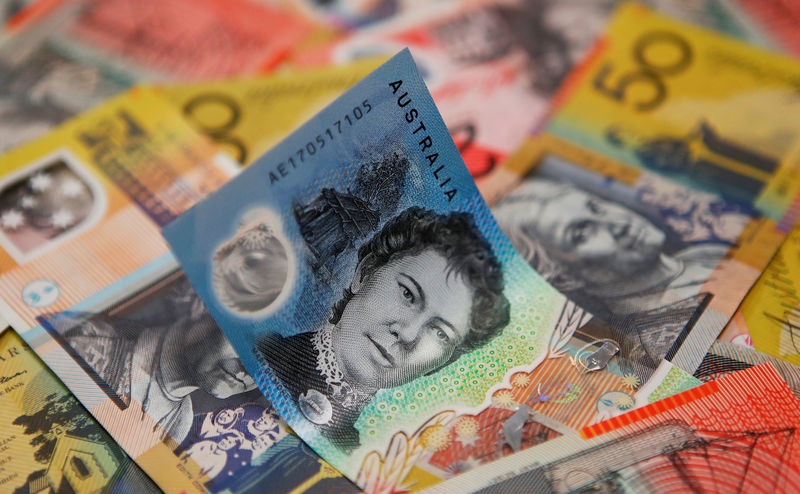By Swati Pandey
SYDNEY/WELLINGTON, Aug 13 (Reuters) - The Australian dollar skidded to 1-1/2 year lows on Monday as investors drove to perceived safe haven currencies following a slump in the Turkish lira while the New Zealand dollar hit a fresh 2-1/2 year trough.
The Australian dollar AUD=D4 , which is often played as a proxy for emerging market assets, fell to $0.7251, a level not seen since January 2017. The Aussie has already fallen more than 2.1 percent so far this month as investors dump risk-sensitive currencies for the safety of the Japanese yen JPY= .
"Risk-off is never good for the Aussie dollar," said Greg McKenna, chief market strategist at AxiTrader.
"And so it has been the past few days as the focus of traders and the pressure applied to Turkey has intensified," McKenna added.
"That the Aussie is under pressure is no surprise because it has always been and remains the world's favourite currency punt. And consequently, the AUD/USD doesn't usually do well when markets get into a funk."
Turkey's lira TRYTOM=D3 has fallen about 45 percent against the greenback this year on worries over Turkish President Tayyip Erdogan's increasing control over the economy and a deepening rift with the United States. Mexican peso MXN=D2 , Argentine peso ARS= and South African rand ZAR=D3 were also weak against the U.S. dollar on Monday as the lira crisis unsettled some other emerging market currencies. FRX/
Later this week, analysts will focus on Australian data on wages and employment. The second-quarter wage price index is expected to rise 2.1 percent from a year earlier while jobs are seen extending their strong run, according to a Reuters poll.
In New Zealand, the kiwi NZD=D4 went as deep as $0.6558 - a level not seen since early 2016. The currency has stumbled 3.5 percent so far in August with heavy losses last week after the country's central bank left the door ajar for a rate cut. kiwi was last at $0.6588, up 0.2 percent after declining 2.6 percent last week.
The Reserve Bank of New Zealand (RBNZ), on Thursday, committed to keep rates at record lows through to 2020 but signalled a further easing in policy was possible if economic growth disappoints.
The dovish tilt sent the currency on a tailspin against the Australian dollar AUDNZD= , falling to a near 10-month trough.
The possibility of a rate cut also caused a rally in bond prices, sending two-year New Zealand yields NZ2YT=RR to the lowest in modern history.
New Zealand government bonds 0#NZTSY= gained, sending yields 1.2 basis points lower at the long end of the curve.
Australian government bond futures jumped to eight months highs, with the three-year bond contract YTTc1 up half a tick at 97.970. The 10-year contract YTCc1 added 2.5 ticks to 97.435.
(Editing by Sam Holmes)
